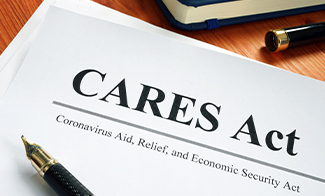Tax Savings Through the CARES Act: New Opportunities for NOL Carrybacks
Businesses faced with the prospect of posting year-end operating losses in 2020 can look to the CARES (Coronavirus Aid, Relief, and Economic Security) Act for some much-needed relief.
While 2017’s Tax Cuts and Jobs Act (TCJA) stipulated that losses could only be carried forward and only offset 80% of taxable income in that year, the CARES act rolled back those changes, allowing net operating losses from 2018, 2019, and 2020 to be carried back as far as five years.
This means that a corporate taxpayer could use losses generated this year, when the corporate tax rate is 21 percent, to offset taxable income in 2015–2017 when the rate was 35 percent. Furthermore, companies that posted NOLs in 2018 or 2019 could file amended returns to claim potential refunds from as far back as 2013.
The Act also removed the 80 percent carryforward limitation for the current tax year, but NOLs used in 2021 and later years will remain subject to the limitation.
The CARES Act also included a helpful provision that once again mitigated some of the TCJA — namely regulations affecting pass-through entities. Business owners are still limited to a deduction of losses of $250,000 ($500,000 for joint-filing couples) for tax years 2018-2025, but the effective date has been postponed until January 1, 2021, offering more flexibility to businesses as they seek to bounce back after a rocky 2020.
Properly utilizing the provisions of the CARES Act can limit your tax exposure, offering substantial flexibility that will allow your business to thrive in 2021 and beyond. Contact Dembo Jones today for a thorough analysis of the Act’s provisions, how they apply to your organization, and how to make the most of them.
